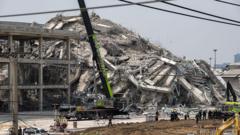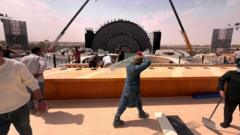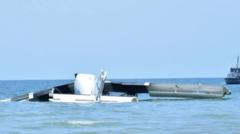In a crucial development regarding the devastating skyscraper collapse in Bangkok earlier this year, 17 arrest warrants have been issued for individuals involved in its construction and oversight, following a 7.7 magnitude earthquake that struck Myanmar.
Seventeen Arrest Warrants Issued in Bangkok Skyscraper Collapse Investigation

Seventeen Arrest Warrants Issued in Bangkok Skyscraper Collapse Investigation
Thai authorities have issued 17 arrest warrants related to the fatal collapse of a construction skyscraper following a massive earthquake.
A Thai court has authorized the issuance of 17 arrest warrants tied to the unfortunate collapse of a 30-storey skyscraper in Bangkok, which was intended to house the State Audit Office. The building crumbled during a strong earthquake that hit Myanmar on March 28, registering a magnitude of 7.7. Investigative authorities reported that 89 bodies have been retrieved from the ruins, but seven individuals remain missing.
Among those named in the warrants is Premchai Karnasuta, a businessman and former president of the Italian-Thai Development PLC, which ranks as one of the country’s leading construction firms. Initial investigations have revealed structural deficiencies in a lift shaft within the tower. Detailed reports on the exact causes behind the disaster are still pending from Thai authorities.
Video footage captured during the earthquake showed swaying high-rises and water cascading from rooftop pools onto the streets below, highlighting the tremors' intensity. While many buildings in Bangkok withstood the quake, the State Audit Office—a striking blue glass and steel structure—was not so fortunate. After three years of construction and an investment exceeding two billion Thai baht (approximately $59 million, or £45 million), the tower was left in ruins.
At the time of the collapse, over 400 workers were present on the site, prompting the mobilization of drones, sniffer dogs, cranes, and excavators for rescue efforts. The earthquake in Myanmar was catastrophic, resulting in over 3,000 fatalities and injuring upwards of 4,500 individuals, with its tremors felt across a wider area, including Thailand and south-west China.
This tragic incident raises multiple questions regarding construction safety and regulatory oversight in the region, temporarily overshadowing Thailand's developments in the architecture and construction sector.



















